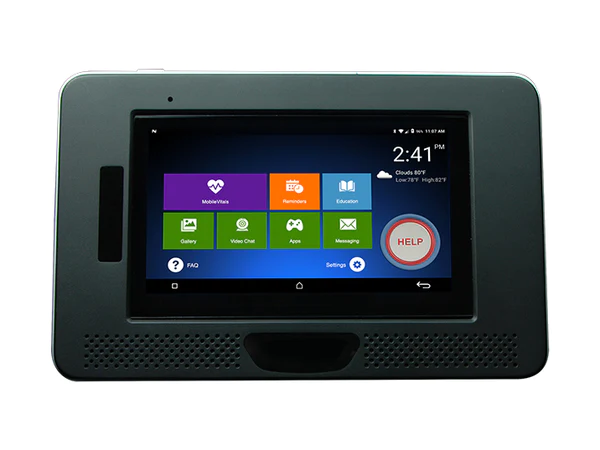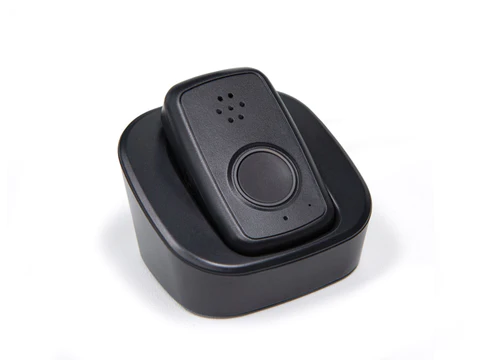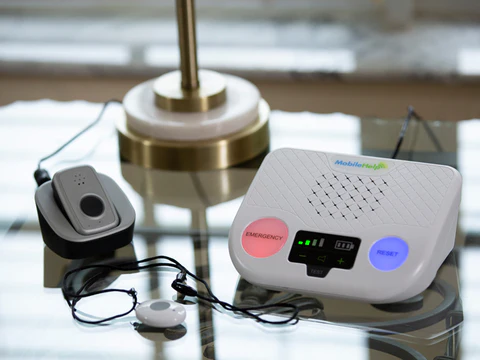Article Contents
Introduction
Mobility is an important issue for all seniors. As people age, they find it increasingly difficult to move around and do day-to-day tasks without assistive devices or supplies like mobility equipment. It is especially essential for those who spend their senior years in Independent Living facilities or Home Care. This article will go over the different types of assistive devices for seniors and how they can improve their quality of life. Be sure not to miss out on these helpful tips!
What Is an Assistive Device and Why Do Seniors Need Them?

Assistive devices for seniors can help with with disabilities or limitations. This includes walking, eating, talking, and other activities of daily living that people might take for granted.
Assistive devices for seniors can range from simple things like a cane to more complex voice amplifiers or wheelchairs. Not only are these devices helpful, but they are also needed because the body will eventually wear out over time and not be able to do what it once could.
These devices help keep the individual mobile and independent for longer periods of time, which is important because we want all individuals to have autonomy throughout their lives.
21 Must-Have Assistive Devices for Seniors
1. Wheelchairs
A common mobility assistive device for seniors is a wheelchair. There are many different types of wheelchairs, including manual and electric models, that can be used by seniors to get around with ease.
Electric wheelchairs allow people who have trouble walking or need more support to function independently. These devices also require less effort than pushing the traditional wheelchair, so they provide greater comfort. They come in various styles, from lightweight chairs for use indoors to heavy-duty ones designed for rough terrain outdoors.
2. Canes/Walkers
Older adults may find it difficult to walk without some assistance. But thankfully, there are several walking aids available, such as canes or walkers, that make it easier.
Canes help maintain balance when an individual is walking on uneven terrain. They also provide a surface for the person to lean against when they need some help getting up from sitting or entering and exiting a vehicle.
Walkers offer multiple points of support that make it easier for someone with limited mobility to balance themselves without assistance. These are especially helpful in preventing falls, leading to serious injuries like hip fractures or head injuries.
3. Mobility Scooters

An electric mobility scooter can help those with mobility issues; it’s also great for people who are recovering from surgery or have arthritis. These devices allow the user to cover wider distances without fatigue, making it easier for them to go on errands.
4. Standing Frame
For seniors dealing with serious health problems like arthritis, heart disease, chronic obstructive pulmonary disease (COPD), cancer, Parkinson’s Disease, stroke, or diabetes who are not able to stand independently but want standing support when rising out of bed or sitting at an armchair; the Standing frame may help them maintain their independence by aiding them in balancing their weight. These frames come in various heights, weights, and colors.
5. Gait Belts
Gait belts are used to provide stability and assist a person’s natural gait when they walk. These devices can be handy for individuals with balance or mobility challenges, Parkinson’s disease, or anyone recovering from hip surgery.
Gait belts are often used in combination with a mobility device such as a wheeled walker or crutches. They can also be used for assistance when getting up from sitting on the floor, going downstairs, and navigating uneven terrain like gravel paths.
While some gait belts come fully assembled out of the package, many medical supply retailers offer adjustable models that allow you to adjust them to your body size and level of physical need, so it may take more than one visit before finding the best fit.
First-time users should look for stability features like padded back straps and wide waistbands that distribute weight evenly across their pelvis while avoiding pressure points around the hips or abdomen.
6. Safety Alarms and Monitors
If a senior falls, they may not be able to get back up. This can lead to serious injuries, and that’s why they need safety devices or alarms in their house that will alert someone if they have fallen.
7. Cushions/Pillows

Some people have difficulty moving around due to soreness and pain caused by arthritis, so cushions and pillows may be needed depending on the individual’s needs. For instance, inflatable pillows may provide temporary pressure relief during periods of acute discomfort.
Wedge pillows are mainly used by people suffering from acid reflux problems. Still, they can prove useful if someone suffers from GERD/LPR (gastroesophageal reflux disease), too, because these types of pillows help keep the head propped up.
Positioning pillows are also a great idea for those who have back problems because they enable the user to sit upright and avoid slouching, which can cause long-term pain in muscles and joints.
8. Reachers and Grabbers
A reacher or grabber is a helpful tool that can assist in reaching objects on the floor, pick up items from high shelves, turn off lights, or open/close doors with no grip strength. This device helps people avoid falls by allowing them to access higher places quickly and safely without assistance. They’re perfect for those who have poor balance due to Parkinson’s disease, dementia, stroke, or arthritis, among others.
9. Toilet Assist Devices
Toilet assist devices such as raised toilet seats (sometimes called elevated toilets) may be necessary for some people who need help getting on or off the toilet but don’t want to use any mobility device that would prevent them from using their own bathroom at home.
Raised commodes make it easier for many older adults with arthritis or other chronic conditions to get onto the seat, so they’re not overstretching themselves when lifting their legs into position. And this is just one way how assisted living can help seniors who need some help with mobility.
Getting assistive devices for the elders like bathroom and bedside toilets can be a great way to make things easier on someone who is having trouble getting around or has difficulty using their hands, arms, or legs due to injury, illness, arthritis, stroke recovery to keep them safe and comfortable at home.
10. Shower Chair
Many seniors find sitting in a standing shower difficult, so they prefer using a chair while taking showers. It provides back support when washing their hair and stability during body movements like rinsing the soap off the skin, which can be difficult for people with limited mobility.
A Shower Chair is also helpful to those who have a hard time bending or squatting because it provides a seat while they shower. This device helps provide balance and stability, preventing slip-and-fall accidents in the bathroom that might result from falls due to muscle weakness.
11. Bathroom Assistive Devices and Safety Rails
Elder folks may require assistance while in the bathroom. That’s why it is important to have safety rails installed. They help prevent slips, falls, and trips, which can be harmful when one has a walker or other assistive devices.
12. Non-Slip Bathmat
It is important to have non-slip bathmats put down near tubs and showers so that one does not slip while getting out of the shower or trying to take care of personal needs at home after bathing. Non-slips mats come in many different sizes and materials such as vinyl, rubber, polyester fabric with suction cups, and even foam.
13. Bed Rails

Older individuals who are bedridden may need help during accidental movements while asleep, where bed rail assistances come in handy as they protect the user from falling out of bed. They also provide better positioning when one needs assistance getting into or out of bed.
14. Bed Risers
Bed risers are excellent for individuals who need a little boost to get out of bed. These devices can also be used as assistive devices in homes with raised floors, such as those created from wood or cement blocks.
15. Sock Aids
Sock aids are a helpful assistive device for elderly adults because they make it easier to pull on and take off socks. This is important because arthritis can be painful, making bending over difficult or impossible.
There are two types of sock aids. There’s a ring and clip version with an elastic band with clips on the end; or a looped handle that loops over one’s arm.
16. Quilt Holders
Quilts need to be aired out regularly, so a quilt holder is handy when moving without help. Quilted holders have handles at either end of the long edge with loops sewn into one side of each handle across its width. The other end has loops sewn into the edge of each handle to hold onto a quilt’s corners.
17. Lift Assistive Devices
There are many types of lift assistive devices on the market today. They can be very helpful for seniors who have difficulty lifting objects or who need help getting out of a chair or bed. Some of the lift assistive devices for elderly include lift harnesses, slings, reacher grabbers, etc.
18. Assistive eating devices
There are a number of different assistive eating devices for elderly that can help elderly individuals eat more comfortably and independently. For example, A feeding tray is a simple device that can be used to hold food and drinks. Suction cup cutlery is another great option for elderly individuals who have difficulty gripping traditional cutlery. The cutlery features a series of suction cups on the handles, which create a strong grip between the cutlery and the user’s hand.
19. Assistive listening devices
There are many different types of assistive listening devices for eldelry available on the market. Some of the most popular devices include hearing aids, cochlear implants, and personal amplifiers. If you’re looking for a device that can help you hear better in noisy environments, a personal amplifier may be a good option. These devices are small and portable, and they can be worn around your neck or clipped to your belt. They amplify sound signals so that you can hear them more clearly.
20. Assistive technology devices
There are a variety of assistive technology devices that can be helpful for elderly individuals at home. Some of these devices include large-button phones, magnifiers, alarm systems, tracking devices, etc. These provide them with independence while still able to live at home comfortably!
21. Assistive Emergency Devices
Assistive emergency devices are designed to provide assistance in case of any unforeseen circumstances, such as power outages, natural disasters other emergencies. Here are some of the best picks:
i) MobileHelp Touch Classic
The MobileHelp Touch Classic is the perfect solution for those who want the peace of mind that comes with a reliable emergency response system. It is not just an emergency response system, it’s a comprehensive health and wellness tool.
With easy-to-use plug-and-play features, this system can be set up in minutes. The scrolling picture gallery allows you to add images of your loved ones, and even games such as Sudoku, providing a comforting and entertaining distraction during moments of stress. Additionally, it has activity tracking and medication reminders, helping you take control of your health and stay on top of your medication regimen!

MobileHelp Touch Classic
ii) MobileHelp Micro
MobileHelp Micro is an excellent emergency device that provides peace of mind wherever you go. With multi-mode location accuracy GPS, detachable lanyard, and water resistance, you can wear it 24/7, even in the shower! This portable device is lightweight, weighing only 52 grams, and provides loud and clear voice guidance. Plus, it has automatic fall detection, making it one of the best devices on the market.

MobileHelp Micro
iii) MobileHelp Duo
The MobileHelp Duo System is the ultimate solution for anyone looking for an all-encompassing emergency help solution. With this system, you get an in-home base unit, a mobile unit for when you’re away from home. The device is equipped with GPS tracking, waterproof help button, remote activation, integrated fall alert, and 24/7 US-based monitoring, making it an all-rounder when it comes to emergency help.

MobileHelp Duo
The Importance of Mobility Aids

The importance of mobility for seniors is that it helps with physical well-being, independence, and mental health. It can help them to remain active, which leads to better overall well-being.
Mobility aids like medical supplies, equipment, and adaptive tools allow people with physical challenges to enjoy full use of their bodies. These devices are also important for those living alone because they allow them to complete more tasks in the home by themselves without relying on another person.
When a senior has mobility issues such as arthritis or stroke, their physician may recommend assistive devices. This can make activities of daily living less painful and complicated.
Top 3 Points
1. Mobility aids are important for older adults because it allows them to stay active. As a result, they can complete tasks without relying on another person.
2. There’s a wide variety of assistive devices for seniors to purchase. They can be mobility equipment, medical supplies, adaptive tools, or even other necessary items like hearing aids.
3. It’s important to consult your doctor before purchasing any assistive device.
Conclusion
The truth is, we all get older. And as you age, it can become more difficult to complete the day-to-day tasks necessary for living independently in a home setting. That’s why mobility aids like wheelchairs and walkers are so important when it comes to staying active and independent.
There’s no one solution for everyone, but there is an extensive range of assistive devices for seniors available. They include mobility equipment, medical supplies (for daily life), adaptive tools, or hearing aids. It’s always best to consult your doctor about what kind of assistance will work best for you.
But if you prefer a hassle-free retirement where everything is taken care of by the friendly, competent staff, then Assisted Living may be a perfect choice. Let our Senior Advisors guide you in choosing the right senior living option for you.
FAQs
Why does elderly not use assistive devices?
There could be a number of reasons why elderly people do not use assistive devices. Some may feel that they are too old or frail to use them, while others may not know how to properly operate the devices. Additionally, some elderly people may be reluctant to rely on outside help, preferring to manage on their own as long as possible.
What are assistive devices for the elderly?
Assistive devices are tools that can help elderly people with everyday tasks. These devices can range from simple tools like canes or walking sticks, to more complex devices like wheelchairs or scooters. Assistive devices can help elderly people stay mobile and independent, and can make everyday tasks like bathing or cooking much easier.
How to use assistive devices?
If you are considering purchasing an assistive device, it is important to consult with your doctor or a specialist to find the best device for your needs. To use an assistive device, you will need to learn how to operate it properly. Many devices come with manuals that will guide you through the proper use of the device. Also, you can check video tutorials.
Is a wheelchair an assistive device?
Yes, a wheelchair is an assistive device. It helps people with disabilities or mobility issues to move around more easily.
How to use assistive devices for walking?
There are many types of assistive devices for walking, including canes, crutches, and walkers. Generally, to use an assistive device for walking, hold the handle and extend the device in front of you. Step forward with your good leg, and push off with your bad leg to take a step. Place the bad leg behind you, and repeat the process to continue walking.
What are the four major types of assistive listening devices?
The four major types of assistive listening devices include:
1) Personal amplified system
2) FM systems
3) Infrared systems
4) Bluetooth systems


1 comment
whoah this blog is wonderful i really like reading your articles. Keep up the great paintings! You realize, a lot of people are hunting round for this info, you could help them greatly.
Comments are closed.